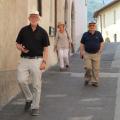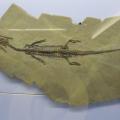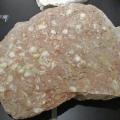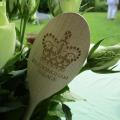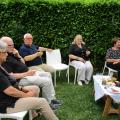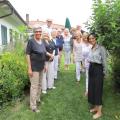We found ourselves in a quiet nucleo, on a siesta silent afternoon, in the sun washed village of Meride. Meride nestles on the hillside of Mte San Giorgio, the subject of our cultural outing.
The Mountain is 1097 metres high situated at the southern tip of both the Alps and Lake Lugano (Ceresio). On one side it falls down towards Italy and Porto Ceresio, and on the Swiss side to Capo Lago.
Meride is home to a new paleontological museum designed by Mario Botta a famous Ticinese architect. The whole area was designated in 2003 as a UNESCO World Heritage Site. It is regarded as one of the 6 major fossil repositories in the World. The museum sits hidden from view much like the treasures of San Giorgio were themselves.
Like entering a Tardis, the visitor is transported through time, 240 million years into the past. Then, Mte San Giorgio was a protected lagoon on the edge of the Ocean Tethys, cut off from the sea by reefs and islands, of which todays Mte San Salvatore was one. Our continents were one landmass called Pangea. This was geologically speaking the Triassic period. The lagoon, a marine basin, approximately 10kms wide and up to 100 metres deep had the ideal conditions for preserving fossils. For 10 million years marine life lived and swam in these warm poorly oxygenated waters. They died and sank to the seafloor and were covered by sediments and volcanic ash. With the passage of time this rich organic mud became compacted. With the pressure of the continents dividing, techtonic movement, and the earth crust plates colliding, the Alpes were thrust up and the lagoon seafloor was folded back into stratas of various rock formations that we see today. Mte San Giorgio was made of layers of carbonate Limestone minerals and Dolomite rock. The latter being similar to Limestone, but harder and versatile, is porous and it changes under heat and pressure. This is significant on two accounts. Firstly, beinf porous it is called a reservoir rock and became a natural trap for subsurface fluids like oil. Secondly it metamorphoses into a coarse crystalline textured rock called ‘dolomite marble’.
Through excavations for the oil and quarrying for marble, the discoveries of the fossils were made. Paleontologists began in ernest in the 1920’s to preserve fantastic fossils of reptiles, fish and invertebrates even insects and plants from these bituminous shale slate type rocks from San Giogio and the surrounding area. Rosso d’Arzo (red Marble of Arzo) was famous throughout Europe in the Renaissance and used to decorate churches. The last quarries were only closed in Arzo in 2010. In 1907 a factory near Meride was opened to distill oil from the rock to make ‘saurolo’ a pharmaceutical ointment to treat skin diseases. Crude oil could be extracted from the organic rich carbon rock, about 80 liters per one ton of rock. This business finished in the 1950’s. Today the exciting fossil finds are the business. Some new species were given local names. ‘Ticinosuchus ferox’ was a terrestrial predator dinosaur, that must have been washed into the lagoon. A fierce model of it greets visitors to the museum. The display cases show many skeletons of ‘Ceresiosaurus’ an aquatic agile reptile predator, with a long giraffe like neck, and a large triangular skull, 4 large oar like limbs and up to 3 metres long. It is almost too much to take in for one visit and well worth a second visit.
But the outing and afternoon was not yet over. We adjourned to a peaceful garden and the home and hospitality of the Ortelli’s. We sat in the shade and conversed while indulging in a traditional English Afternoon Tea. Assorted sandwiches, scones with jam and clotted cream and replenished cups of hot tea.
A real home from home and a lazy end to yet another interesting cultural outing, little known, but right on our doorstep.
Penny Osti & Jennifer Pappert-Hall


